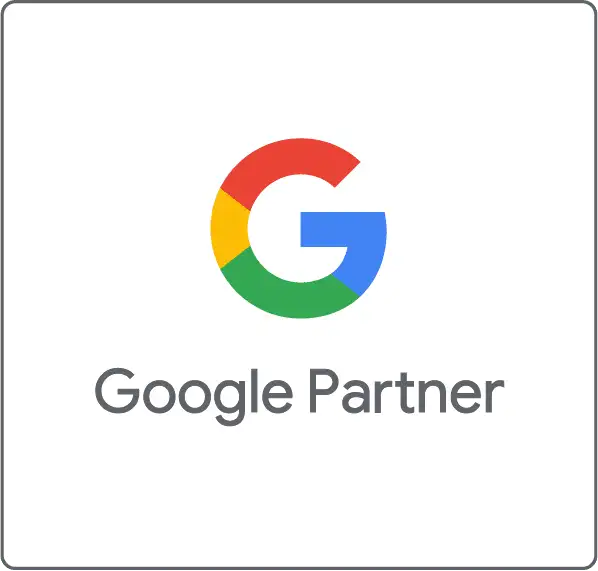Today we’ll show you some of the setup that is necessary to turn on location for an advertising campaign.
We’ll focus on a tool called Factual, which is a fantastic interface, and in my opinion, a fantastic tool to deploy location data.
There are two parts of the tool: proximity and audience.
Proximity looks at locations, and audiences looks at past location visitation.
We’re going to show five examples in the video above of how this data is used.
Audience 1 – Auto sales, competitive conquesting for Honda dealers
Audience 2 – Mexican restaurant – high income customers
Audience 3 – Been at Walmart
Proximity 1 – 2 miles around Five Guys
Proximity 2 – MGM for Top Golf
Click Here to watch the video directions for setting up a campaign in Factual.
So, you can see that location advertising targeting is versatile if you know how to filter audiences for an advertising campaign and use this precision data to reach consumers.
Next, we’re going to talk about where ads appear for these types of targets.
Today we will use the Factual application.
When you look at factual, they’re two different sections, audience, designer, and proximity.
Proximity tells you where people currently are. This one lets you reach people based on where they have been in the real world. And let’s jump right in to audience.
Audience 1
In this advertising campaign audience number one is designed to identify, competitive conquesting for Honda dealers. So let’s say you’re a local Toyota dealer, and you may want to identify people who have walked into a Honda dealership in and around your area in Los Angeles over the last 30 days.
It’s a clear indicator that they’re in market for a car and you want to tap in to that audience.
Next we go into the behavior section of this tool. I’ve already typed in a Honda. I went to this section right here. I typed in chains. I typed in Honda.
I filter into Los Angeles by the way, because I’m not interested in people who are in New Jersey going to Honda dealerships. I want people who are in my immediate vicinity interested in buying a Honda and I want them to end up buying a Toyota.
All of these red dots indicate Honda dealerships. That’s Culver city Honda, that’s Honda of Santa Monica.
I want to get people to my Toyota dealership through my advertising campaign. And so basically what I do is I do a search. I go to place – chains – Honda and I use Honda dealerships.
And by the way, just to give you some details, like for automotive, for example, you can target any one of these dealers, Buick Cadillac, Dodge Ferrari.

I’m then going to filter. I can filter by state. I can filter by general area. I can target at Lambda for example, or the Los Angeles. I want to actually target specifically the city of Los Angeles.
What this is telling me is that there are 52 places that allow me to target the Honda dealer in Los Angeles.
And what this says is these are people who I’ve been at the Honda dealer in the last 30. I can target a radius and say anyone who’s been near a Honda dealership, but that’s not nearly as valued as people who have been at the location in the last 30 days.
And you can change this to two months, three months, a year or a specific timeframe.
You can also further filter this advertising campaign search. We can drill into a specific age group.
I could keep this as all Honda dealerships, or I’m going to add this to the design. Now I’m filtering to people who are 25 to 54. We can see here that there are 210,000 people who meet this targeting criteria.
Audience 2
All right, next advertising campaign, we have a Mexican restaurant and let’s say that the Mexican restaurant really is interested in targeting people who have been to other Mexican restaurant places in and around their town. So, there’s a few ways we can do this. And what I’ll do is I’ll first go in to the category.
And with food category is pretty straight forward. I can target people who are in the business of food, who are in candy stores or cheese stores or chocolate stores or farmers markets, or breweries, bakeries, barbecues, buffets, Chinese foods, delis, diners, fast food, Korean, Mexican, middle Eastern pizza, and so forth.
There’s a lot of targeting available. So first I want to say. I have a high end Mexican restaurant. It’s expensive. I want to target people who like Mexican food. I’m targeting people who are interested in Mexico food. And let’s say my restaurant is somewhere here in Hollywood.
We really want to target that two to five mile area. What I can do is target restaurants in a specific set of zip codes. So what I do is I go to advanced postcode. I go to postcode. And I’m targeting people who are in these areas. So nine zero zero two seven zero eight and zero three eight. I’m targeting people who have been to a Mexican restaurant in these areas in the last 30 days.
And I can go back to a year and these are people who have been at the location. I may take up the zip codes and now I’m going to get people I’m going to go back here and type in address, contains and type in Hollywood. And I’m going to get people in a larger area.
Filter advanced address contains Hollywood. Let’s say I just want to target everyone in Los Angeles. y geo, I’m going to go to DMA. I’m going to go by locality Los Angeles.

Audience 3
Foe this next advertising campaign let’s take a look at people who have been to a specific Walmart. We really want people to make this point or fly off the shelves.
And so really our buyers are anyone who walks into that Walmart. If you don’t walk into the Walmart, you will never be able to purchase because we’re in a test phase right now. So again, you go back to chains. I’ll take this off type in Walmart, Walgreen, whatever the case is, you type in Walmart. So that’s selected and the locality contains Pomona.
And what happens here is I have two places and Pomona’s out here in Los Angeles and I have these two locations on here, which is Walmart on Rancho road. And this is the Walmart neighborhood market. So again, these are people who have been at the location in the last month, but we can go out further than that.
These are active shoppers at Walmart. There you go. You have a calculated reach for this advertising campaign and you can serve ads to these people. Again, you can go in and filter lifestyle. For example, if you’re selling something healthy, you might have. The opportunity to target gym and fitness people.
The only thing is if you target too granularly, you’re going to make it so that you don’t have enough people to target to begin with. So we had about 50 to 75,000 people in the last two data sets. This might be unnecessarily narrow.
Proximity 1
And for this advertising campaign let’s go to the example of a Five Guys Burgers and Fries. Say I’m a restaurant, a franchisee. And I know that people will travel two miles around my address to target people who will come to my Five Guys Hamburger.
I identify my address. I can identify that just by uploading my address or uploading my latitude longitude. Categories – chains, I can type in Five Guys Burgers and Fries.
Just set the radius GFS. And what this says is that anyone who has been within a two mile radius around this address, anyone who is here right now, they are eligible to see our ad. And what that means is if you’re on your mobile device, or there’s some data that is being passed about your location in any capacity.
Now we have identified you as a person who is in our selective filter, and we can serve ads to these people.
I’m going to calculate, reach. There’s 177,000 devices. I would really focus in on this number.
What this does is give you directionally the accurate data about the scale of the audience. What I can say here is that there’s a lot of impressions available to reach 177,000 devices for this campaign.
Proximity 2
Finally for our last advertising campaign, what we’ll look at is MGM for Top Golf. This is top golf right here is right next to the Signature. And at MGM grand, this is in Vegas.

People go to Aria Park, MGM and MGM grand. These are the, these are your feeders to walk into top golf. Why? Because it’s easy to access it’s nearby. It’s just overall geographically desirable, even though overall the strip is geographically desired. And let’s say, also say that the people will visit Park MGM, Aria and MGM grand.
Maybe you don’t want to target people who go to Excalibur because they don’t spend as much money in Excalibur, so we can exclude them.
We can hone in to anyone who is in this radius, and give them the ability to see our ad when they are in this space.
We can even select 600 feet from MGM Resorts, MGM Grand, Skyloft at MGM, MGM grand buffet. Anyone who’s in these places right now, they have an opportunity to see our ad, to get them over to this top golf that is next door.
On a separate type of advertising campaign, you can set this up so that anyone who has been at the MGM recently, if they’re still in Vegas, they have the opportunity to see your ad.
The point is you can place a geographic filters so that you’re only targeting people who are in Vegas right now. If you are not in Vegas right now, this targeting is completely unnecessary unless you’re targeting a campaign for future accessibility.
Location targeting is versatile. If you know how to filter audiences and use this precision data to reach customers.















